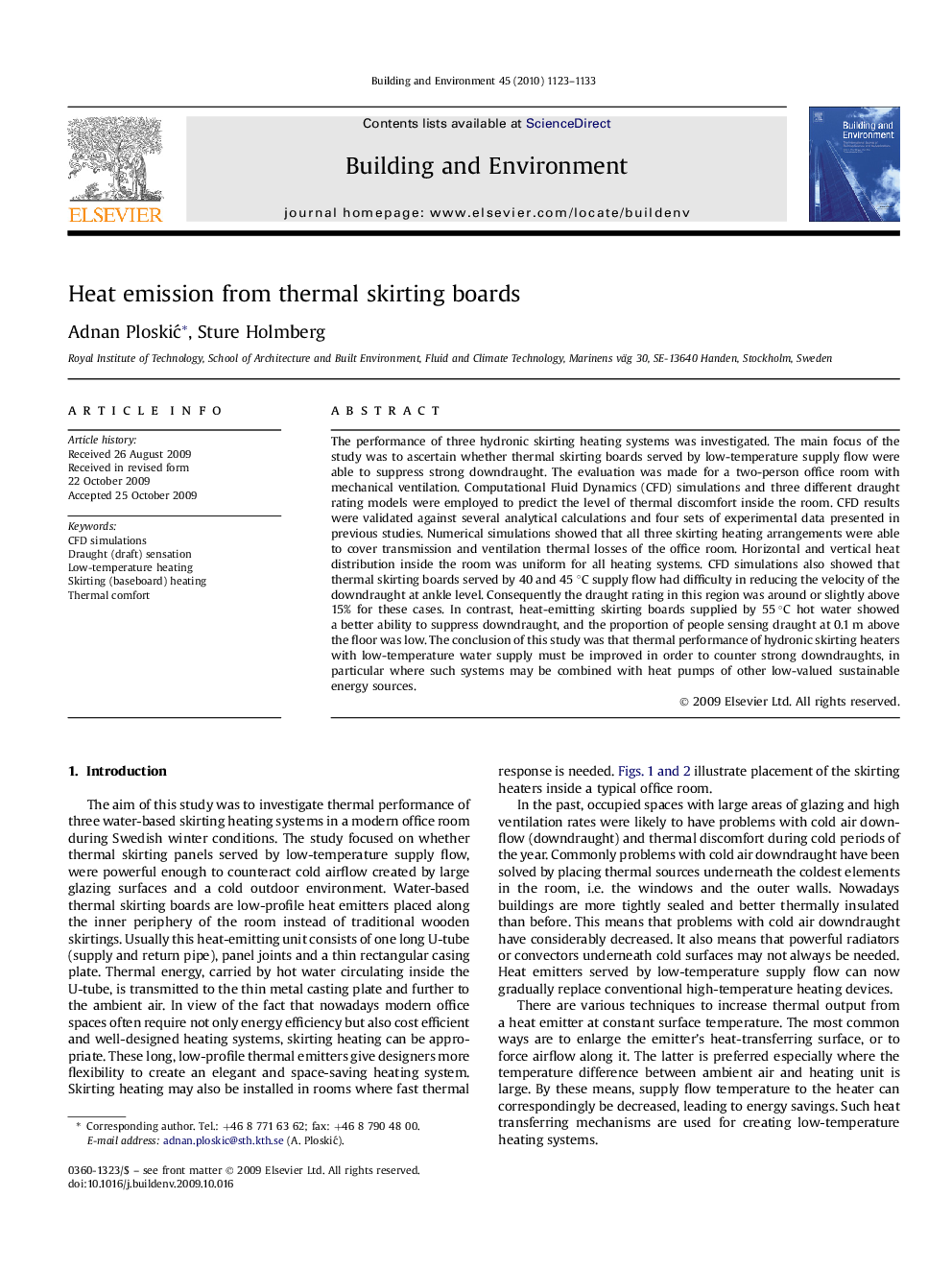| کد مقاله | کد نشریه | سال انتشار | مقاله انگلیسی | نسخه تمام متن |
|---|---|---|---|---|
| 248943 | 502590 | 2010 | 11 صفحه PDF | دانلود رایگان |

The performance of three hydronic skirting heating systems was investigated. The main focus of the study was to ascertain whether thermal skirting boards served by low-temperature supply flow were able to suppress strong downdraught. The evaluation was made for a two-person office room with mechanical ventilation. Computational Fluid Dynamics (CFD) simulations and three different draught rating models were employed to predict the level of thermal discomfort inside the room. CFD results were validated against several analytical calculations and four sets of experimental data presented in previous studies. Numerical simulations showed that all three skirting heating arrangements were able to cover transmission and ventilation thermal losses of the office room. Horizontal and vertical heat distribution inside the room was uniform for all heating systems. CFD simulations also showed that thermal skirting boards served by 40 and 45 °C supply flow had difficulty in reducing the velocity of the downdraught at ankle level. Consequently the draught rating in this region was around or slightly above 15% for these cases. In contrast, heat-emitting skirting boards supplied by 55 °C hot water showed a better ability to suppress downdraught, and the proportion of people sensing draught at 0.1 m above the floor was low. The conclusion of this study was that thermal performance of hydronic skirting heaters with low-temperature water supply must be improved in order to counter strong downdraughts, in particular where such systems may be combined with heat pumps of other low-valued sustainable energy sources.
Journal: Building and Environment - Volume 45, Issue 5, May 2010, Pages 1123–1133